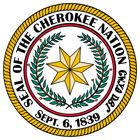How do the organizations benefit from this?
It’s all in the name; as a public sector organization, the main purpose is to serve the public. But that doesn’t mean it’s only them who will have their happiness increased.
It is more efficient for institutions and departments to ask for information that’s already been collected from the citizens and stored than ask for the same information again, resulting in optimized workflows and internal processes. Instead of the workload doubling or tripling, different parts of the ecosystem that need to work together can already have the intelligence available, therefore offer better services more effectively.
Governments can become more efficient, transparent, and digitized. Plus, circling back to user centricity, with an interconnected network of agencies, institutions, and departments, the public sector can take a step closer to remaking the customer experience they offer from purely reactionary to anticipatory.
For example, Deloitte highlights the case of Estonia where, thanks to the once-only policy and the principle of interoperability, they were able to transform their service delivery. In practice, it works this: once you have a new baby, the birth certificate arrives without a request. Provided the government has the data readily available, it can truly predict its citizens’ needs.








